
Filter News
Area of Research
- (-) Fusion and Fission (7)
- (-) Materials (69)
- (-) National Security (25)
- (-) Neutron Science (122)
- (-) Quantum information Science (9)
- Advanced Manufacturing (4)
- Biology and Environment (15)
- Computational Biology (1)
- Computer Science (3)
- Electricity and Smart Grid (1)
- Energy Science (36)
- Functional Materials for Energy (1)
- Fusion Energy (1)
- Isotope Development and Production (1)
- Isotopes (27)
- Materials for Computing (9)
- Nuclear Science and Technology (14)
- Supercomputing (77)
News Topics
- (-) Cybersecurity (23)
- (-) Frontier (5)
- (-) Isotopes (14)
- (-) Neutron Science (127)
- (-) Partnerships (17)
- (-) Quantum Science (25)
- (-) Space Exploration (5)
- 3-D Printing/Advanced Manufacturing (32)
- Advanced Reactors (12)
- Artificial Intelligence (25)
- Big Data (8)
- Bioenergy (20)
- Biology (14)
- Biomedical (22)
- Biotechnology (2)
- Buildings (6)
- Chemical Sciences (36)
- Clean Water (4)
- Composites (9)
- Computer Science (47)
- Coronavirus (15)
- Critical Materials (13)
- Education (1)
- Energy Storage (40)
- Environment (28)
- Exascale Computing (3)
- Fossil Energy (2)
- Fusion (28)
- Grid (13)
- High-Performance Computing (12)
- Hydropower (1)
- Irradiation (1)
- ITER (6)
- Machine Learning (18)
- Materials (81)
- Materials Science (87)
- Mathematics (1)
- Microscopy (29)
- Molten Salt (3)
- Nanotechnology (44)
- National Security (35)
- Nuclear Energy (48)
- Physics (32)
- Polymers (18)
- Quantum Computing (4)
- Security (13)
- Simulation (5)
- Summit (7)
- Transportation (23)
Media Contacts
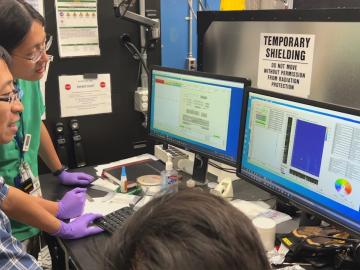
Neutron experiments can take days to complete, requiring researchers to work long shifts to monitor progress and make necessary adjustments. But thanks to advances in artificial intelligence and machine learning, experiments can now be done remotely and in half the time.

Mike Huettel is a cyber technical professional. He also recently completed the 6-month Cyber Warfare Technician course for the United States Army, where he learned technical and tactical proficiency leadership in operations throughout the cyber domain.
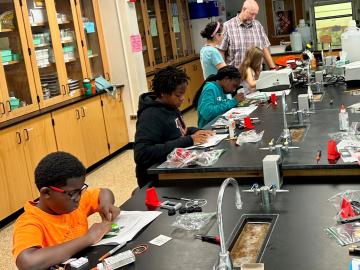
A group at the Department of Energy's Oak Ridge National Laboratory made a difference for local youth through hands-on projects that connected neutron science and engineering intuitively.
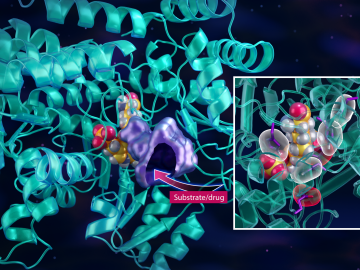
After a highly lauded research campaign that successfully redesigned a hepatitis C drug into one of the leading drug treatments for COVID-19, scientists at ORNL are now turning their drug design approach toward cancer.
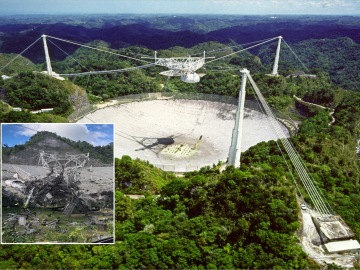
For more than half a century, the 1,000-foot-diameter spherical reflector dish at the Arecibo Observatory in Puerto Rico was the largest radio telescope in the world. Completed in 1963, the dish was built in a natural sinkhole, with the telescope’s feed antenna suspended 500 feet above the dish on a 1.8-million-pound steel platform. Three concrete towers and more than 4 miles of steel cables supported the platform.
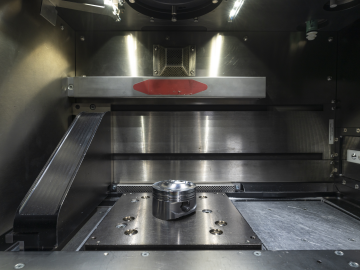
Dean Pierce of ORNL and a research team led by ORNL’s Alex Plotkowski were honored by DOE’s Vehicle Technologies Office for development of novel high-performance alloys that can withstand extreme environments.
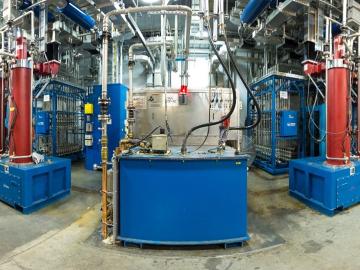
The Spallation Neutron Source at the Department of Energy's Oak Ridge National Laboratory set a world record when its particle accelerator beam operating power reached 1.7 megawatts, substantially improving on the facility’s original design capability.

Researchers at the Department of Energy’s Oak Ridge National Laboratory were the first to use neutron reflectometry to peer inside a working solid-state battery and monitor its electrochemistry.

Tristen Mullins enjoys the hidden side of computers. As a signals processing engineer for ORNL, she tries to uncover information hidden in components used on the nation’s power grid — information that may be susceptible to cyberattacks.
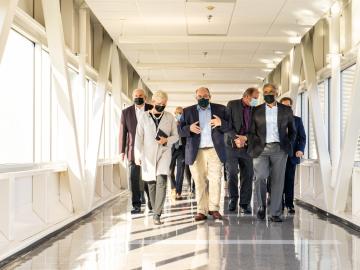
Ken Herwig's scientific drive crystallized in his youth when he solved a tough algebra word problem in his head while tossing newspapers from his bicycle. He said the joy he felt in that moment as a teenager fueled his determination to conquer mathematical mysteries. And he did.


